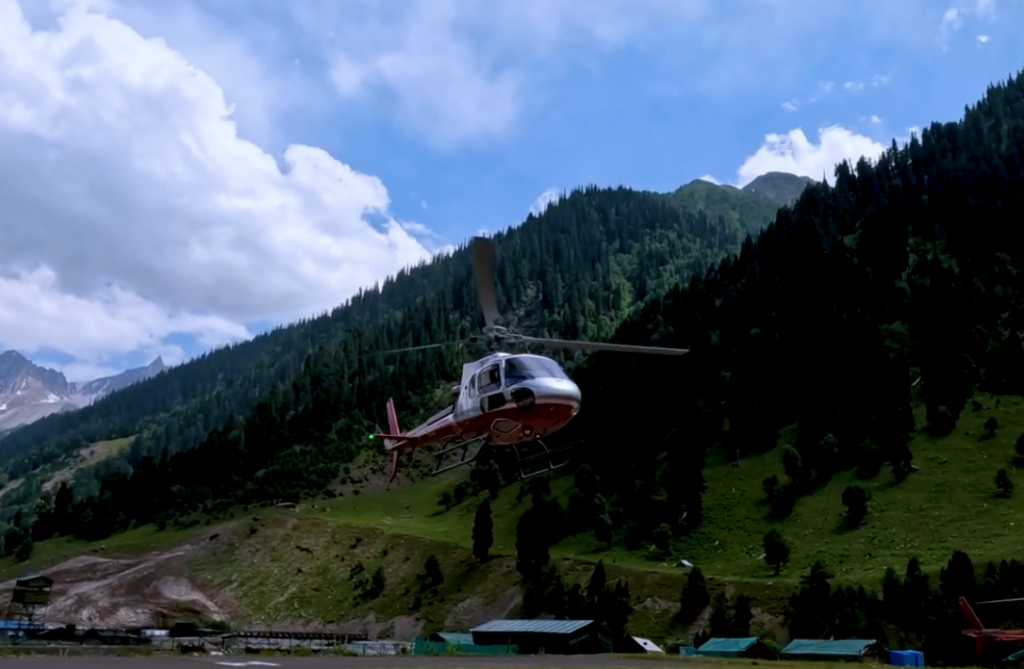Srinagar, June 17, 2025 – The Jammu and Kashmir administration has designated the Amarnath Yatra routes a ‘No Flying Zone’ from July 1 to August 10, 2025, to enhance security for the annual pilgrimage to the Amarnath cave shrine. Acting on the Ministry of Home Affairs (MHA) advisory, the J&K Home Department has imposed a complete ban on all aerial activities, including drones, Unmanned Aerial Vehicles (UAVs), and balloons, along the Pahalgam and Baltal routes. This decision, prompted by heightened security concerns following the April 22, 2025, Pahalgam terror attack, aims to ensure a safe pilgrimage for thousands of devotees. Below is a comprehensive overview of the directive, its context, and the robust security measures in place.
‘No Flying Zone’ Directive: Key Details
The ‘No Flying Zone’ declaration, issued under the authority of Lieutenant Governor Manoj Sinha, prohibits all unauthorised aerial devices during the Shri Amarnathji Yatra 2025, scheduled from July 3 to August 8, 2025. The measure addresses potential threats, such as drone-based attacks, which have become a growing concern in the region. Exceptions are allowed for medical evacuations, disaster management operations, and security force surveillance, with a detailed Standard Operating Procedure (SOP) to be released to regulate these exemptions.
Table 1: ‘No Flying Zone’ Specifications
| Parameter | Details |
|---|---|
| Duration | July 1 to August 10, 2025 |
| Affected Areas | Pahalgam axis, Baltal axis |
| Restricted Devices | Drones, UAVs, balloons, and other aviation platforms |
| Exemptions | Medical evacuations, disaster management, security force surveillance |
| Issuing Authority | J&K Home Department, based on MHA advisory |
| Objective | Mitigate aerial threats and ensure pilgrim safety |
Why the Restrictions? Context and Security Concerns
The Amarnath Yatra, a revered Hindu pilgrimage to the Amarnath cave shrine at 3,880 meters in the Himalayas, draws thousands of devotees annually via two primary routes: the 48-km Pahalgam route (longer, traditional) and the 14-km Baltal route (shorter, steeper). The pilgrimage’s high-profile nature and the region’s volatile security environment necessitate stringent measures. The Pahalgam terror attack on April 22, 2025, which killed 26 people, including 25 tourists, highlighted vulnerabilities, particularly to emerging threats like drone-based arms trafficking and aerial attacks. The MHA’s advisory to impose a ‘No Flying Zone’ reflects a proactive approach to neutralize such risks.
Comprehensive Security Framework
To ensure a safe and incident-free yatra, the J&K administration has deployed an extensive security apparatus, complementing the aerial restrictions. Key measures include:
- CAPF Deployment: 581 companies of Central Armed Paramilitary Forces (CAPF), including CRPF, BSF, and ITBP, will secure the routes and base camps.
- Jammers: Installed to neutralise remote-triggered explosives during convoy movements.
- Convoy Protection: CAPF escorts and temporary road blockades to secure pilgrim convoys.
- Specialised Units:
- Road Opening Parties (ROPs): To clear and secure routes.
- Quick Action Teams (QATs): For rapid response to threats.
- Bomb Disposal Squads (BDS): For explosive detection and neutralization.
- K9 Units: Trained sniffer dogs for enhanced detection.
- Aerial Surveillance: Security forces will use drones (exempt from restrictions) for real-time monitoring.
- RFID Tagging: Mandatory Radio Frequency Identification for tracking pilgrims and enhancing safety.
Table 2: Security Measures for Amarnath Yatra 2025
| Measure | Purpose |
|---|---|
| CAPF Deployment | Secure routes and camps with 581 companies |
| Jammers | Counter remote-triggered explosives |
| Convoy Escorts | Protect pilgrim convoys with CAPF escorts and road blockades |
| ROPs | Ensure route safety and clearance |
| QATs | Enable rapid response to security threats |
| BDS | Detect and neutralize explosives |
| K9 Units | Enhance detection with trained sniffer dogs |
| Aerial Surveillance | Monitor routes using security force drones |
| RFID Tagging | Track pilgrims for safety and coordination |
Exceptions to the Aerial Ban
The ‘No Flying Zone’ allows limited exceptions to ensure operational efficiency:
- Medical Evacuations: To facilitate emergency medical transport, such as airlifting injured pilgrims.
- Disaster Management: For relief operations during natural calamities like landslides or avalanches.
- Security Surveillance: Drones and other devices operated by CAPF and other forces for monitoring.
A forthcoming SOP will provide detailed guidelines to balance these exemptions with the overarching security framework.
Implications and Public Cooperation
The ‘No Flying Zone’ is a critical step toward a secure Amarnath Yatra, particularly in light of recent security challenges. The J&K administration has urged pilgrims, locals, and stakeholders to comply with the restrictions to ensure a smooth pilgrimage. The yatra’s duration, reduced to 38 days (July 3 to August 8), reflects a strategic effort to streamline security operations.
Conclusion
The J&K government’s decision to declare the Amarnath Yatra routes a ‘No Flying Zone’ from July 1 to August 10, 2025, underscores its commitment to pilgrim safety. Driven by the MHA’s advisory and the aftermath of the Pahalgam terror attack, the aerial restrictions, coupled with extensive ground security measures like 581 CAPF companies, jammers, and RFID tagging, aim to ensure an incident-free yatra. Pilgrims are encouraged to cooperate with authorities and adhere to the SOP to make the Shri Amarnathji Yatra 2025 a safe and spiritually fulfilling experience.



